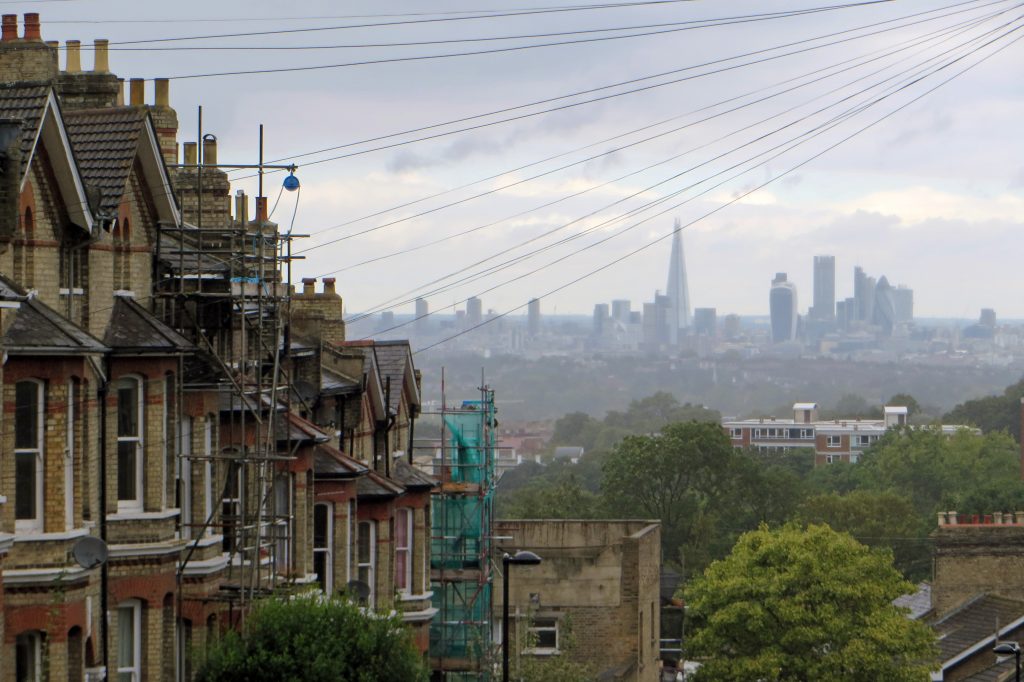
What is community-led housing and does it have a future?
This article is part of our Voices of the Economy series. The project brings together the economic experiences and opinions of people from a range of different backgrounds and showcases voices which are not heard as often when we talk about the economy. To find out more and share your own story, click here.
Alex Talbot currently works as a regeneration officer at the London Borough of Croydon where he coordinates the Community-Led Housing site disposal programme. Alex has a background in the homeless sector and is currently the secretary for Christchurch Road CLT's voluntary steering group.

When I'm not working in my day job at a London Council, I'm helping to deliver a housing development in my home borough of Lambeth. However, I'm not a part-time private developer. I'm a member of a steering group for a Community Land Trust (CLT) working to deliver at least 27 homes in Brixton Hill, south London.
More luxury flats I hear you cry! Well no, these houses will all be genuinely affordable (linked to around a 1/3rd of local wages) and will remain so forever.
Together with a group of amazing local people and in conjunction with London CLT and London Citizens, we're trying to push back against the usual unaffordable flats that price out lifelong residents and low to medium-income families. Not only that, but by working as a local community, we're upskilling members and developing cohesive bonds of solidarity within our neighbourhoods.
Amongst many things, the COVID pandemic has shone a revealing light on the inequality of housing in London and nationwide. Not all experiences of lockdown are equal, and housing is a fundamental determinant of that. Little surprise that Newham in East London simultaneously holds the unwanted title of the most COVID-19 deaths and the worst housing crisis nationwide on a wide range of measures.
Furthermore, this virus has proved that when it comes to an emergency, strong community bonds can be the difference between life and death for the most vulnerable within our communities. So, while there are currently thousands of ideas and theories being bounded around about how to recast the world post-COVID, I'd argue that growing community-driven housing development has its part to play.
What is community-led housing?
Encompassing a range of housing types and arrangements, community-led housing (CLH for short) is, at its core, about community groups acting as not-for-profit developers, building and then managing genuinely affordable housing that stays affordable forever.
The UK's community-led housing sector is currently on the rise. Bolstered by generous and accessible state funding, a well-established supportive infrastructure and an ever-increasing mass of local people wanting to combat Britain's persistent housing affordability crisis. The future looks bright, but are there lessons for the sector to learn?
Community-led housing's historical origins
Both the municipal house building and housing association movement of the late 19th and 20th century have contributed to today's CLH movement, and importantly contain lessons for its future.
Starting in the late Victorian era, the British state (accompanied by a range of philanthropic developers) began building housing specifically for those sections of the market that couldn't afford it. These state-funded homes were known as council or social housing. Delivery of homes by local authorities reached its apex in the early 1950s before slowly tapering and then almost wholly disappearing by the 1990s. Its effect on the socio-spatial landscape of Britain has been immense but also certainly not without criticism.
The Post-War British welfare state, for all its marvel, was operated in an unashamedly bureaucratic way. Its founders saw nothing wrong with the highly paternalistic system; which intentionally tried to uniformise (irrespective of social characteristics) all citizens' experience of the state.
Unsurprisingly, this meant little opportunity was afforded to residents of Britain's new housing developments to meaningfully shape their housing experience. Decent, state-provided, housing was something that happened to you, something you should show gratitude towards for getting you out of the slum.
As the state delivery of housing continued through the '60s and into the '70s, the appetite grew amongst existing and would-be social tenants to have more meaningful control of their housing situation. Against a backdrop of rising homelessness and shifting attitudes in the parliamentary Labour Party a second wave of voluntary-sector developers, known collectively as the housing association movement arose.
Differing from the philanthropic developers of the late 19th and early 20th century, these housing associations often developed out of grass-roots campaigns to combat acute housing need within a specific area. Encouraged by a 1974 legislative change which made state funding available to them, the sector matured and expanded rapidly.
Today housing associations dominate the UK's social housing sector. There are over 1500 of them, owning and managing around 2 million homes a year; the largest are some of Britain's biggest housebuilders, and collectively they deliver or commission tens-of-thousands of charity initiatives each year.
The current CLH sector, in many ways, reflects the same context and same underlying desire that shaped the housing association movement of the '60s and '70s. There exists the same perception that something is deeply wrong with our economic model and the same disbelief that such a prosperous nation can be host to such terrible housing situations. Most importantly, there exists the same passion and underlying desire not to be passive but to come together as communities to shape the collective housing futures of fellow residents.
The same prize that drove the housing association pioneers before remains unchanged. Secure, affordable housing and the transformative effect that a coming together of community can have lie at the heart of the CLH movement today.
What challenges does the community-led housing sector face?
The CLH sector can learn the following lessons from the experience of the Housing Association movement:
Cash is king – without gaining access to dedicated state grants in the '70s, housing associations simply wouldn't have grown to the size they are today. CLH schemes need the same level of state support if the sector as a whole is to grow significantly in size. The relentless effort that National Community Land Trust Network (NCLTN), Confederation of Co-operative Housing (CCH), UK Cohousing Network (UKCN) and others have put towards getting additional funding for the community-housing fund should be lauded. But this chorus will need to become louder and more assertive to guarantee the future of the sector.
Expansion isn't easy – hardly a day goes by without a current housing association CEO speaking of the need to ensure the organisation re-engages with its originating philosophy. It's inevitable that with such significant expansion that many housing associations have, for many commentators, become too corporatised and distant from their founding principles. The parable for the CLH sector is clear – considerable expansion presents risks regarding the preservation of social mission.
Cooperate, coordinate, and collaborate – something unquestionably different from the '70s is that the available grants for building social housing are much diminished. Using private-sector debt to build, and cross-subsidising social housing by selling large amounts of market housing are simply facts of the contemporary social housing market. This makes delivering affordable housing challenging and to succeed in such context it would be fatal for councils, housing associations and the CLH sector not to work together. Each of these players needs to understand that their sum is greater than their sole contribution.
What might the coronavirus pandemic mean for community-led housing?
If the crisis of 2008 taught the housing world anything, it's that a significant collapse in the housing market can also be bad for social housing delivery.
On the one hand, CLH might be somewhat insulated from a major housing market slowdown as its less dependent on the private housing and commercial market than housing associations (and increasingly councils) are. However, large-scale government spending and quantitative easing programmes currently being undertaken do increase the likelihood of future austerity.
Such austerity would likely affect the availability of grants for CLH schemes of the future. As most CLH schemes don't have any assets to collateralise (put up against a loan to protect a creditor in the event of default), a drying up of available grants is a critical risk for the sector.
But in a post-COVID world, CLH has a vital role to play. The housing crisis hasn't dissipated, and this pandemic has shone an illuminating light into what housing inequality means at the sharp end.
CLH offers a tool to capture the explosion in community-driven support (typified by local Mutual-Aid networks) and harness it to deliver high quality, sustainable and genuinely affordable housing. Housing that's specifically shaped to fulfil the self-prescribed needs of communities. The CLH sector, tougher with housing associations and councils, certainly don't lack the will to lead the post-crisis housing recovery. It's now down to Government to let them.



